Heritage and Production Breeds. What’s the Difference?

The chickens most of us recognize today are bred for meat or eggs, consequently they look vastly different than their ancestors. The breeds that generations past kept supplying eggs for the family are known as Heritage Breeds. Some of us may even recall the chickens that our grandparents kept and how different they looked. It some cases they may not have even looked like the chickens we associate with today at all.
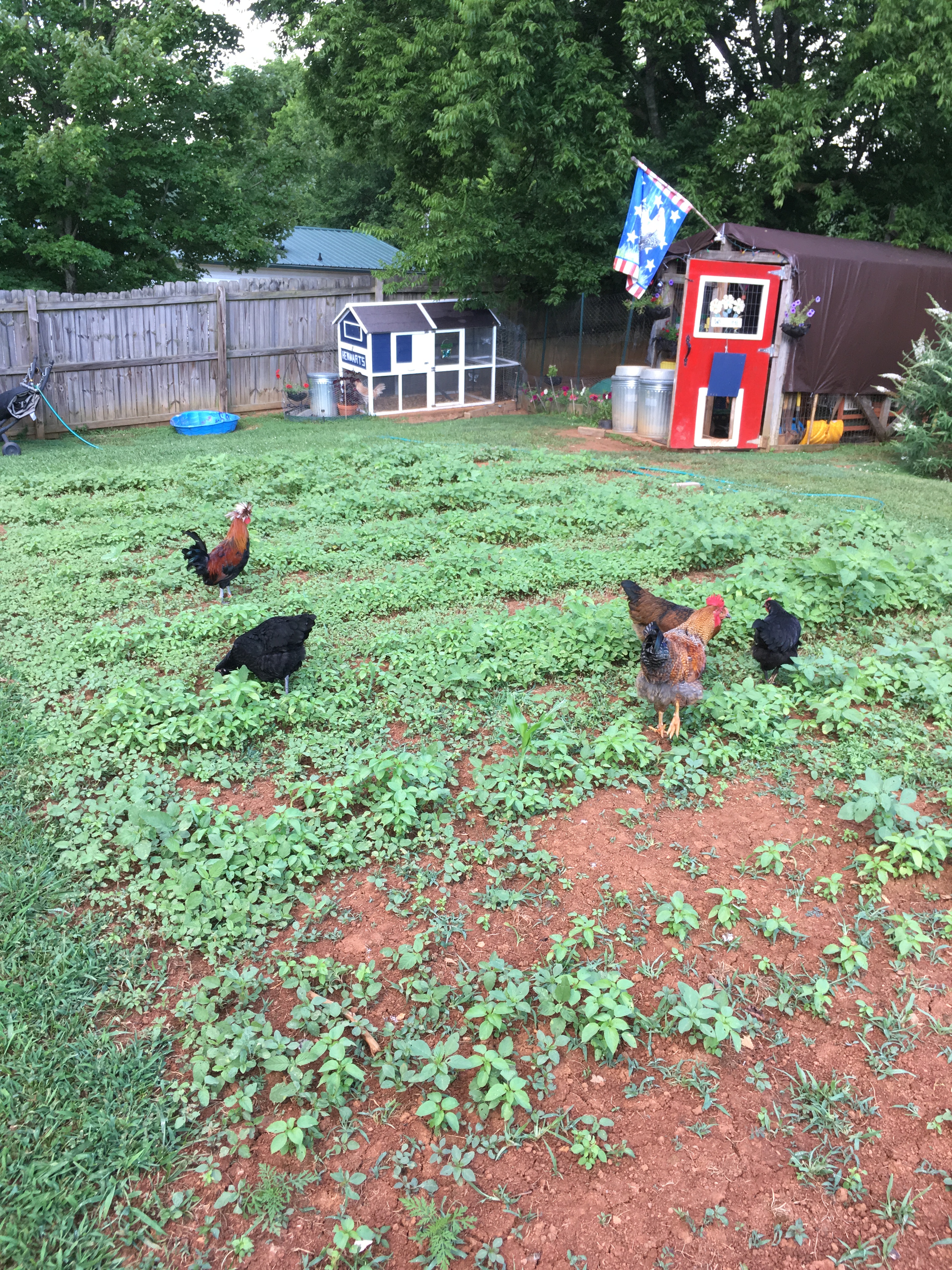
Production breeds are those that are specifically bred for production, whether be it meat or eggs. These industries have selected out traits needed to meet demands. These resulting chickens are engineered to have larger breasts, grow very fast, lay profusely or lay larger eggs. The chickens the exist outside of these breeds are known as Heritage breeds. Heritage breeds store a wealth of genetic resources that are important for our future and the future of our agricultural food system. Heritage breeds were once raised by our forefathers. These are breeds of a bygone era, before industrial agriculture became a mainstream practice. It is through the hobby of backyard chicken keepers and enthusiasts that these breeds still exist today.

You may not know it, but by keeping chickens you are acting as a conservationist. Since the meat and egg industry has no need for heritage breeds, it’s the backyard chicken keepers that keep these breeds from extension. Most of these breeds our grandparents kept as pets or for eggs. Many old photos have captured in time these heritage breeds. As time has march on, alongside us has followed our feathered friends.




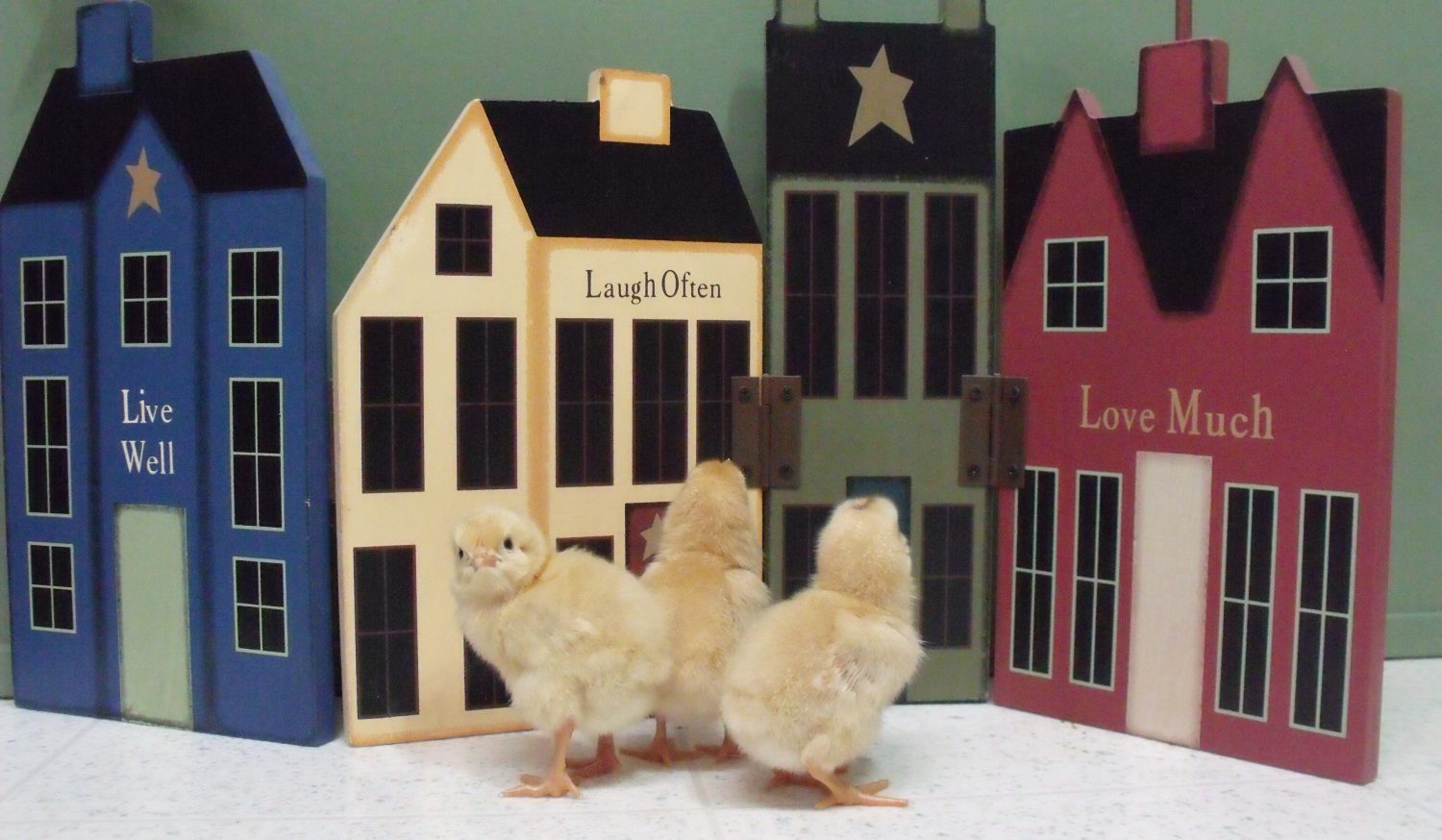
So, what are some of these Heritage Breeds you may be asking. Below I will introduce you to some of these breeds. Many of these breeds I have, others I plan to get in the near future.
The Polish:


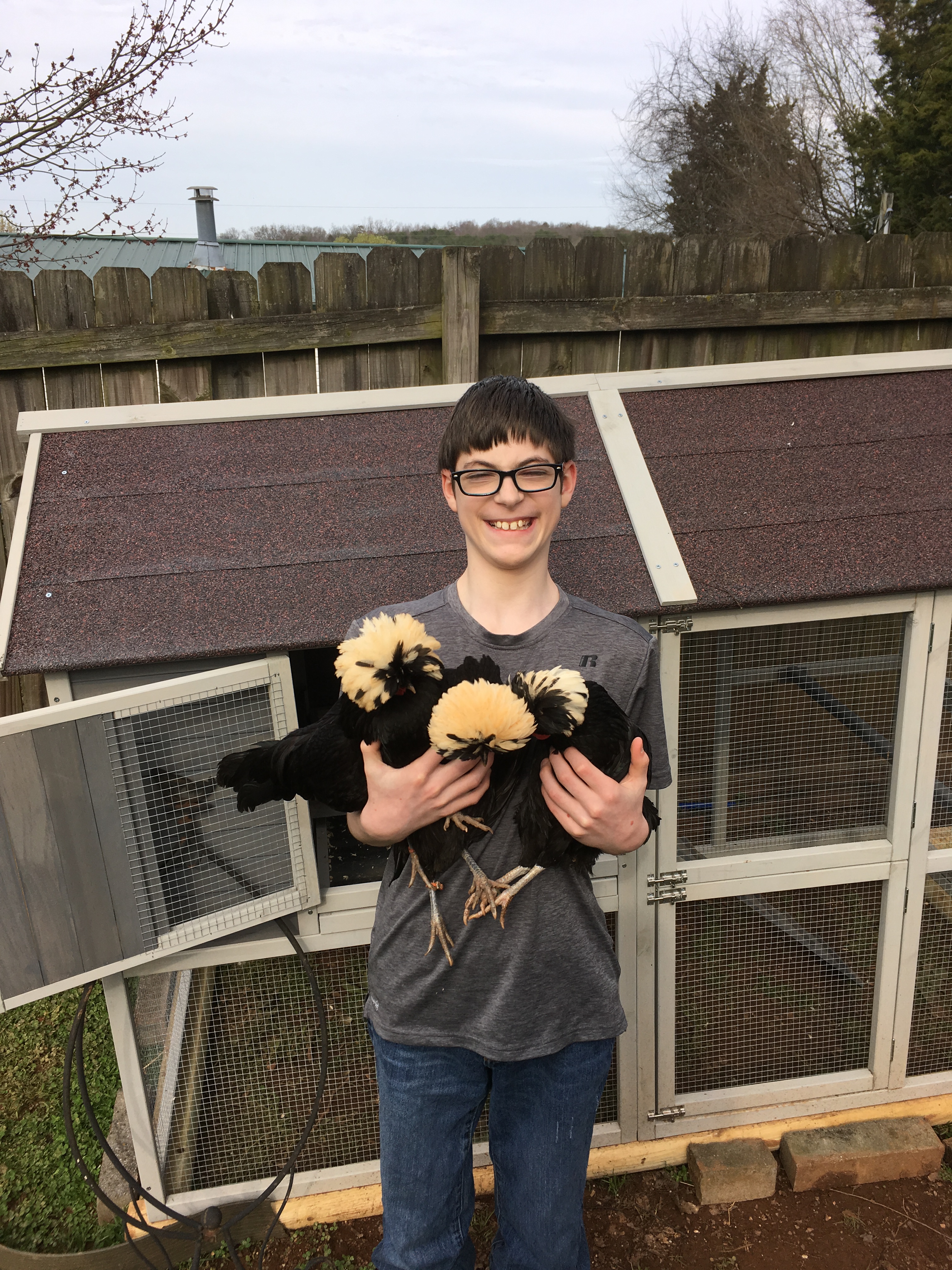

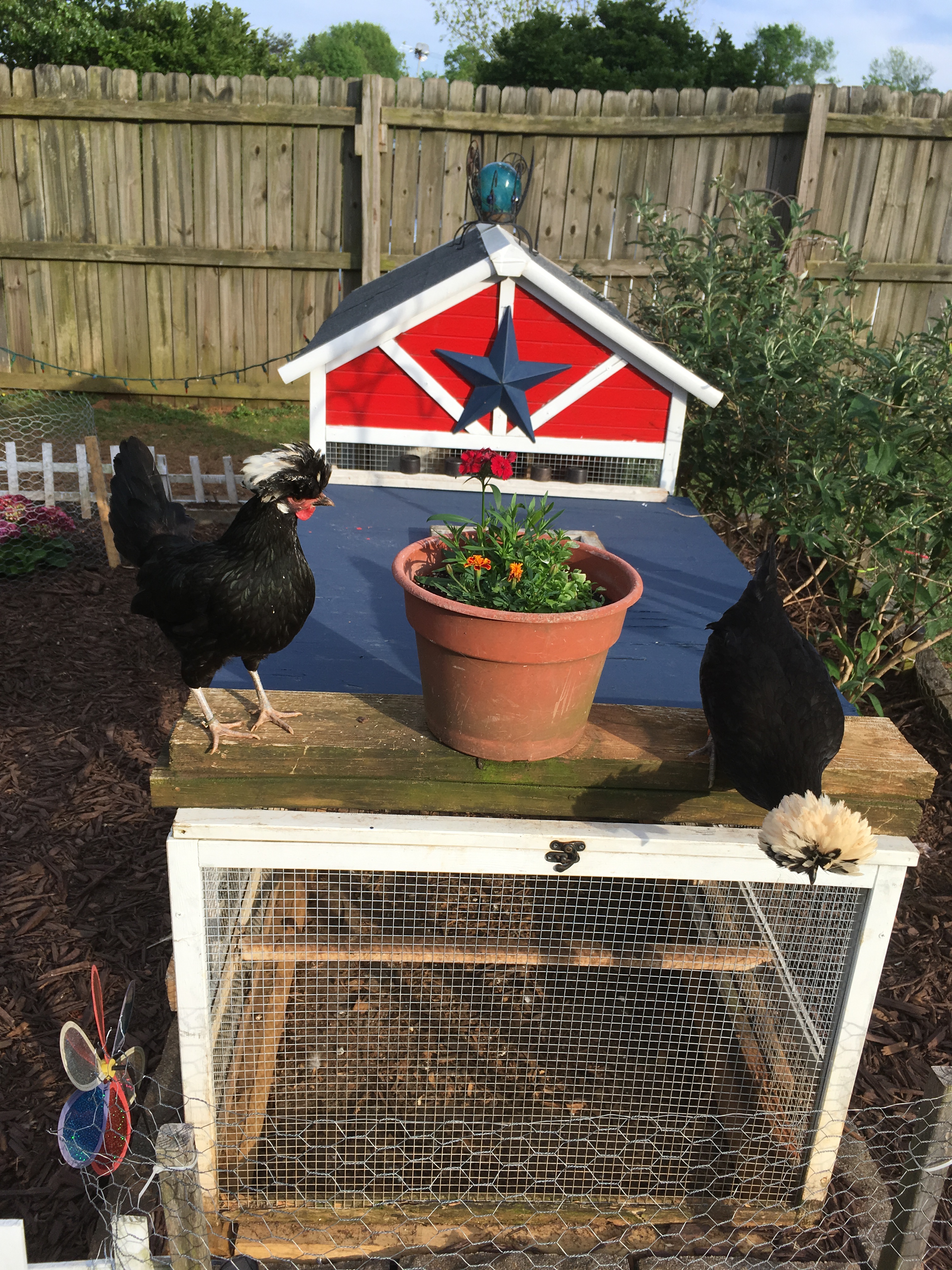


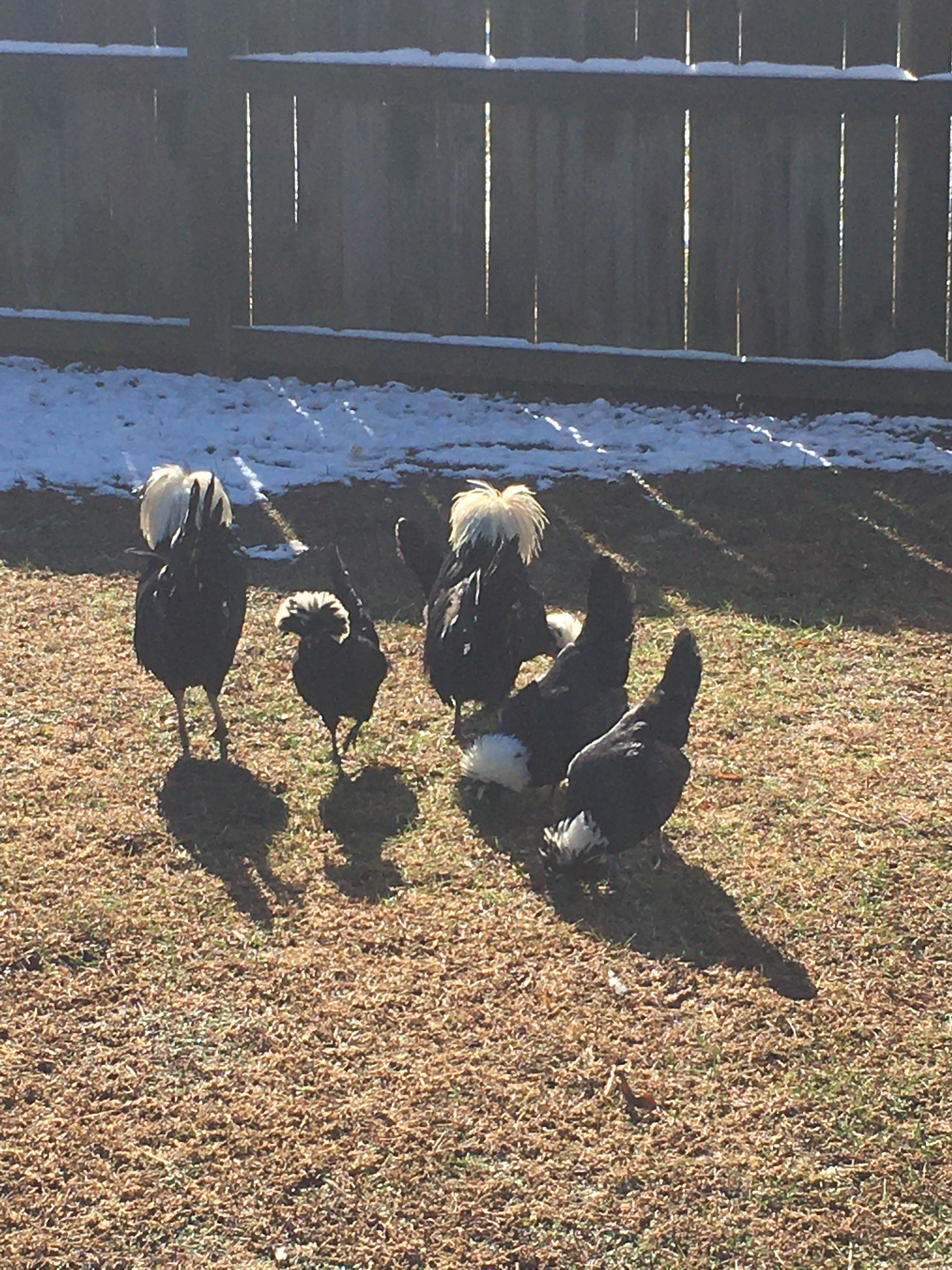

The Polish possesses a very complicated history. Many people think that the Polish came from Poland. This is actually not the case. The word “pol” translates as head, most likely derived from the impressive crests of feathers that top their head. It’s not really understood where this fancy breed came from. Some poultry experts think they came from the Netherlands, others disagree. As for a fun chicken lover such as myself, I wonder if their origins are not of this world after all. Possibly like H.P. Lovecraft’s Cthulhu they came from the stars or another world out there. Just kidding 🙂 In all seriousness though, much mystery surrounds this much beloved Heritage breed. The Polish is a much-favored breed for poultry enthusiasts who want a little something different for their backyard flock.

The Polishes as a breed have a very distinctive personality. Due to their featherd crests, their vision is limited. With obstructed vision everything spooks them. Seemingly mundane and normal objects in their surrounds will get a rise out of them. For this reason, they tend to be high strung and flighty. It takes an experienced keeper with the right setting to successfully keep this breed. A covered pen, protected free range area, and ample coverage are necessary to keep this fancy breed. Due to their feathered crests, they cannot see above them, thus are easy prey for aerial attacks from predators.
To their determent they are also a very curious breed. Individuals will often follow their curiosities into predicaments. Unable to see well enough to get out, they will call out to other members of the flock to rescue them. Typically, one or more of the roosters will answer the call. They are the comedians of the chicken world. I have 14 of these fancy guys and gals of various colors. All of them possess this particular niche for curiosity and comedy.
Buff Orpington:
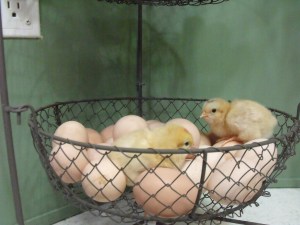
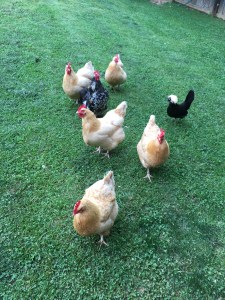


One of the most beloved and most common Heritage breeds kept by backyard enthusiasts is the Buff Orpington. These lovely ladies and gents are often sold in feed stores and are very hearty. I personally have seen many old photos capturing this breed. When I started keeping chickens this was the first breed I ordered. Buff Orpingtons are known the world over for being friendly fluffs of feathers. In my experience I will have to concur.
These ladies and gents are known as the “golden retrievers” of the chicken world and for good reason. They are very loyal and form strong attachments to their keepers. My Buff ladies follow me around the backyard as I do morning and evening chores. When I do any work in the backyard such as potting or planting flowers and crops, I have plenty of “hen help”. They want to be involved in anything that I am doing no matter what it is.
I currently have 5 of these golden girls, at 10 years of age they are the oldest girls in my flock. No longer spring chickens, these ladies are the Zen masters of my flock. They have seen and lived through it all. I will often find one or more of these ladies on my lap when I sit down. They love attention and will follow me chatting till I pick them up and hold them. They are very friendly and make a great breed for beginning chicken keepers.
Besides buff there are other colors of Orpington available. While buff and black are the most common, blue and lavender are also available. Lavender and jubilee are the rarest and cost quite a bit when purchased from hatcheries or breeders. If you can obtain them, they will be the pride and joy of the flock. I plan to purchase lavender and jubilee Orpingtons in the near future.
Australorp:

Related to the Orpington, the Australorp is the Australian take on the Orpington. They were developed as a breed to focus on egg laying. Australorps achieved world-wide popularity in the 1920’s after the breed broke numerous world records for the number of eggs laid in a year. In fact, the world record holder for the most eggs laid in a year was set by an Australorp. She laid 364 eggs in one year, taking only one day off. The most common color is black, the only color recognized in the United States. However, blue and white are still recognized in Australia.
For backyard keepers who want chickens just for eggs, Australorps are the best bang for your buck. They are one of the most common breeds found in feed stores, like the Orpington, they are very friendly and affectionate.
Easter Eggers:

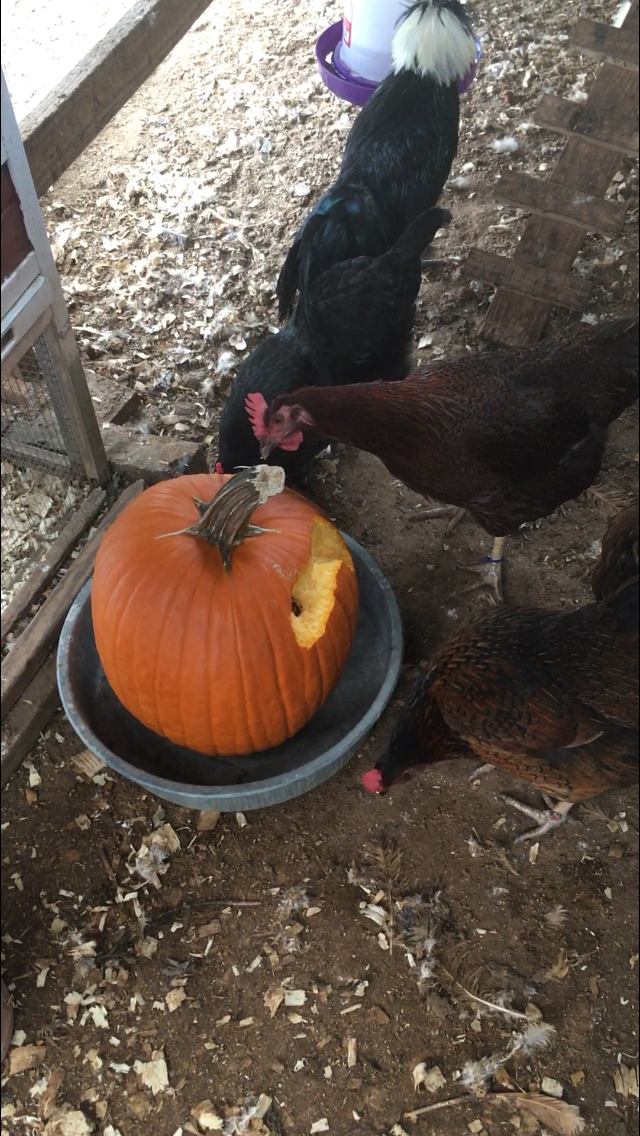
The Easter Egger is a favorite breed because the hens lay multicolored eggs. For this reason, they are sometimes referred to as rainbow layers. Eggs colors will vary by individual and can be anything from blue to brown. Colors such as blue, green, pink, white, beige and brown have all been reported. A hen will have her own color and will lay only that color for the rest of her life. This breed is often found in feed stores, sometime mis-labeled as Araucania or Ameraucana. Because of the multi-line breeding, Easter Eggers come in many colors such as brown, black, white, Buff, and golden lace. The Pigment oocyanin, deposited on the surface of the shell is what gives the eggs the famous blue/green color. As a breed they are hardy, friendly and excellent layers.
The Cochin:


The Cochin is another favorite Heritage breed because they are so docile. Literally big balls of fluff, the Cochins are one of the friendliest breeds. They are not good layers but make excellent mothers and will happily sit on eggs no matter who laid them. They are very affectionate and enjoy interacting with their keepers. I have several varieties of Cochins such as Mottled (specked), frizzle and black. Even the roosters are very docile and friendly. If eggs are the primary reason for keeping chickens, they are not the best selection. Their egg laying is fairly poor, they make up for their lacking egg potential in other ways.
Silkies:





Ah, yes, Silkies, the teddy bears of the chicken world. It’s no secret that Silkies are the most beloved of the ornamental chicken breeds. Voted again and again as the best breed to have for kids. Silkies are quite possibly the favorite Heritage breed of numerous backyard chicken enthusiasts and for good reason. Silkies are very sweet, docile and friendly. The girls make excellent mothers, are very broody and affectionate. Silkie are often kept by backyard chicken keepers for their broody tendencies. They will happily sit on any available eggs, hatch and raise whatever pops out of them. They don’t care as long as they get to have babies. It has been said that a broody Silkie could hatch rocks. After keeping them, I can say I completely agree with this sentiment.
I have a flock of Silkies on my hobby farm and are absolutely smitten. Even the 7 Silkie roosters I have are well behaved. Actually, Silkie roosters make very poor protectors, they prefer to run and hide rather than man up. Lucky, I have other roosters in the yard to pick up the slack when the flock is free ranging.
Silkies are a very old breed. They originated in Asia, were brought to the Western World via the Silk Road, a major trading round in Asia. Silkies date back to the Chinese Han dynasty (around 206BCE). The breed was first mentioned by Marco Polo in his journals that he kept on this trip through China (1290-1300). He recorded in his journal referencing a “furry chicken”.
After Marco Polo’s mention about a” furry chicken” there was not much said about the Silkie till about 1589. Ulysses Aldrovandi, a writer and naturalist published a work on a “wool-bearing chicken”. He described it as “clothed with hair like a cat”.
Silkies get their unique feathering due to the lack of barbicels in their feathers. Barbicels give feathers the smooth texture and appearance we commonly associate with feathers. It is for this reason that Silkies do not like getting wet. If kept in wet climates, a keeper needs to see it that their digs are well sheltered and dry. Contrary to popular opinion, they do tolerate cold climates well as long as they are able to remain dry.
After Silkies made it to the Western World, the breed was recognized officially in North America with acceptance into the Poultry Standard of Perfection in 1874.
In the 21st century, Silkies are one of the most popular and ubiquitous ornamental breeds. They are often kept by backyard chicken enthusiasts as pets. Although not a heritage breed like others discussed. The Silkie is a breed that is alive and well thanks to the conservational efforts of backyard chicken keepers who care for and raise them.
Silver Lace Wyandotte:

The gems of my chicken yard are my Silver Lace Wyandotte’s. I have 4 of these fancy ladies and are absolutely smitten with them. Like the Orpington and Australorp, they are very friendly and great layers. The Wyandotte is a purely American breed, developed in the 1870’s and named after the Wyandotte people of North America.
Many people keep this breed to show at county and state fairs. With their striking black and white feathers, they looked like they are dressed up for a Gala. I too obtained my Silver Lace Ladies for this reason. They are head turners, capturing the attention of anyone who sees them. I am often asked by visitors to my farm about these ladies. I get many comments on their stunning appearance. They are the pride and joy of my flock.
Like the Orpingtons and the Australorps, Wyandotts are friendly and very docile. They are often found at the bottom of the pecking order due to their docile temperament. If you want to add a little high class to your flock, Wyandotts are a great choice. Since they are available in most feed stores, they are readily available.
Other Heritage Breeds:
The Heritage Breeds I have discussed thus far I currently have. However, there are many more to choose from. Below I will give honorable mention to other beloved Heritage breeds. Before I go any further, I want to thank my fellow backyard chicken enthusiasts and friends (who have asked to remain anonymous) for sharing their experience with these breeds. I do not currently have the following breeds but have connections to those who can vouch for the temperament of these breeds based on their own experiences.
Rhode Island Red:

The Rhode Island Red is one of the most common breeds kept by backyard enthusiasts. They are one of the most common breeds found in co-ops during the spring. The Rhode Island Red is a purely American breed. It is actually the state bird of Rhode Island. This breed was developed in the early 19th century by cross breeding two other well-known breeds, leghorn and Malay. As common as this breed may seem, it is actually on the “watch” list by the Livestock Conservancy.
The Rhode Island Red gets its name from the color of its plumage. Other keepers have stated that this breed is friendly with a good nature, but they can be a bit pushy. They are a tough breed, resistant to illness, good at foraging and free ranging. They are hardy breed, lay well, typically docile, friendly and for these reasons they make a good choice for those starting out with backyard chickens.
Plymouth Rock:

The Plymouth Rock is the oldest American breed. It was first breed in the early 19th century and was seen coast to coast before the end of World War 2. Almost everyone kept them, it was encouraged by the Government as food for the troops who were fighting over seas. For much of the 20th century it was the most common breed in the United States. Unfortunately, after the 2nd World War, it declined in popularity and has been listed on the American Livestock Conservancy as “recovering”.
As a breed, the Plymouth Rock is docile in nature, tame and hardy, making them a great choice for beginning backyard yard chicken enthusiasts. The Plymouth Rock is a good general farm chicken. They are docile with a leaning toward broodiness. They are quality layers of medium-large eggs.
The Sussex:

This Sussex is named after its location of origin Sussex, England and is among the oldest of British breeds. In fact, the first ever poultry show was held in London in 1845. One of the first exhibits was a chicken breed simply called Sussex or Kentish Fowl. This was the beginnings of the “Sussex Breed”. Although Kent was mentioned, the birds were thereafter addressed only as Sussex.
The Sussex is a very ancient breed in England’s history. Records show that the Sussex dates back to the time of the Roman Invasion of 43 A.D. Of course, they looked nothing like they do today, but their origins are anything but new.
The time of breeding and various color varieties came about when hen fever hit England in the Victorian Era. The Sussex was breed with other Heritage Breeds such as the Cochin and Brahma to get today’s look of a robust and well-proportioned bird. Today there are several colors available such as red and speckled, brown, buff, white, silver. However, The American Poultry Association only recognized Red and Speckled. Speckled is a beautiful bird which sports a mahogany and while speckled plumage. With successive molts the color gets better. The Light is the coloration most associated with this breed. Birds with light coloration have white bodies with black neck and tail feathers.
Other chicken keepers and friends that I have talked to say that this breed is docile and friendly. They are easy to handle and love to forage. They are very thrifty, if they are allowed to free range, they are able to gather most of their needs from this activity. Several of my friends have said that they are very curious and will follow their keepers around the yard. They enjoy attention and are very interactive and talkative with their keepers.
As for laying potential, they are good layers, laying about 4-5 brown eggs a week. They will continue to lay through the winter when most other breeds have shut down production for the year. They only take a break from laying during molting.
Some keepers have said that they have a tendency to go broody and make good mothers. A fellow poultry keeper and friend of mine says that she has two girls who happily sit on eggs every year hatching and raise clutches of chicks for her. She loves her Sussex momma hens and can count on them to give her new chicks every spring.
In my interview process, one downfall of the breed was mentioned. This breed has a tendency towards obesity. If you want them fattened for the table that is fine, but if you want them to continue to lay eggs, then you need to keep their diet and weight in check. They best way to do this is to keep treats to a minimum and only allow them to get their nutrition from a quality feed and foregoing.
The Sussex is a great breed to have around children. They enjoy the company of their keepers, are talkative, loved being held and stroked. They are low maintenance and thriftily if allowed to free range.
Leghorn:

Foghorn Leghorn, for those that remember Loony Tunes cartoons, Foghorn was the Rooster who was always being tortured by a little chicken hawk. He was probably the best-known Leghorn chicken in the world! These two characters are my favorite Loony Tunes. Foghorn Leghorn as his name suggests is a Leghorn Cock. In his honor, the next Heritage Breed that I will give honorable mention to is the Leghorn.
The Leghorn’s originated in Tuscany, in central Italy. The breed was introduced to North America in 1828 from the port city of Livorno. In America they were originally called “Italians”, by 1865 the breed was known as “Leghorn”.
The exact history of the Leghorn breed is unknown. There were several small breeds of land chickens roaming in the region of Tuscany Italy. From these, the Leghorn was born. When the Leghorn made it to the UK in 1870 the English did not like the small body of the Leghorn. So, It was crossed with the Minorca to give it a more robust frame. Despite the breeding the Leghorn still remains a relatively thin bird.
Contrary to popular opinion, Leghorn’s come in a variety of colors black, brown, white, buff, and silver or grey. The breed was admitted to the American Poultry Association in 1874.
A few friends and fellow backyard chicken enthusiasts of mine report that the Leghorn is a very intelligent and resourceful bird. They are able to find much of their food on their own if allowed to free range which reduces the feed bill. They are good flyers and will often fly into trees to roost if allowed. They can be a bit noisy, definitely not a good breed for an urban setting.
Another friend of mine said that they are a lot like the Polish breed. They get bored easily, so a keeper needs to provide plenty of room and things to do if they are confined to a pen. They are also a bit aloof from human contact not really interested in interacting with their keepers.
As for laying potential, they are good layers, laying about 230-320 eggs per year. That’s about 5+ eggs a week, making Leghorn hens an egg laying machine. For this reason, they make a great staple for a farm setting. They are not very broody, in fact it’s very rare for a Leghorn hen to go broody. If a hen accidentally hatches a chick, they make terrible mothers. If you want to procreate your flock its best to use an incubator or broody hen from another breed such as the Silkie to raise the chicks for you.
If you want a chicken breed that is cuddly and friendly, the Leghorn is not the way to go. However, if you don’t want to make friends of your backyard chickens and just want eggs, they are a great choice. Additionally, if allowed to free range, they are very self-sufficient, reducing the feed bill making them relatively cheap to keep.
Brahma:
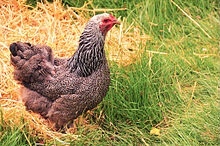
The Brahma is an American Breed of chicken. It was developed in the United States from birds imported from China and was the principle American meat bird from 1850 until about 1930.
Few breeds have as much controversy as to their origins as does the Brahma Chicken. While widely varied claims were originally accepted by early poultry associations, the truth of the matter is that this breed was developed in America by breeding a very large fowl imported from China.
At first, there were many different strains and at least a dozen names for the breed. At a meeting in Boston in 1852 an agreement was reached to name it “Brahmapootra” which later was shortened to just “Brahma”. From the beginning Brahmas have been recognized not only for their incredible size but for their practical qualities. Brahmas are very hearty and good egg layers. Considered great winter layers, Brahma’s will lay right through the winter, only talking a break during molt.
Farmed for its size and known as the “King of Chickens”, the Brahma chicken is appreciated for its great size, strength and vigor. These birds are huge, males can grow to reach 17-18 pounds and the hens can reach anywhere from 13-15 pounds. A typical Brahma Rooster can stand 30 inches tall. Despite its impressive size, the breed is known to be very docile and friendly.
I have one backyard chicken friend who has these impressive birds. She described their disposition as gentile and non-aggressive. It can be easy to be intimated by these giants, but their temperament does not match their stature. They are friendly and docile with a calm disposition. They are very easy to handle but due to their weight they can become heavy quickly.
They make great mothers and are committed to sitting on the nest. However, due to the size of the hen a keeper needs to keep a close eye on the chick for the first few days. The small chick can be easily injured or killed if it is accidentally stepped on by the mother hen.
If allowed to free range, they are well adapted to forage for food making them a self-sustaining breed. They are an excellent breed to have with children present. Although very large they are very docile and non-aggressive. They make a great choice for 4H projects. If you choose to keep these massive birds make sure that the coop is large enough to accommodate their larger than average size. The roosts need to be larger, and sturdy, pens and nesting boxes need to be larger as well.
Although known as the “King of Chickens”, the Brahmas are second in line in size, surpassed only by the Jersey Giant. The next Heritage Breed I will examine is the largest of all chicken breeds.
Jersey Giant:
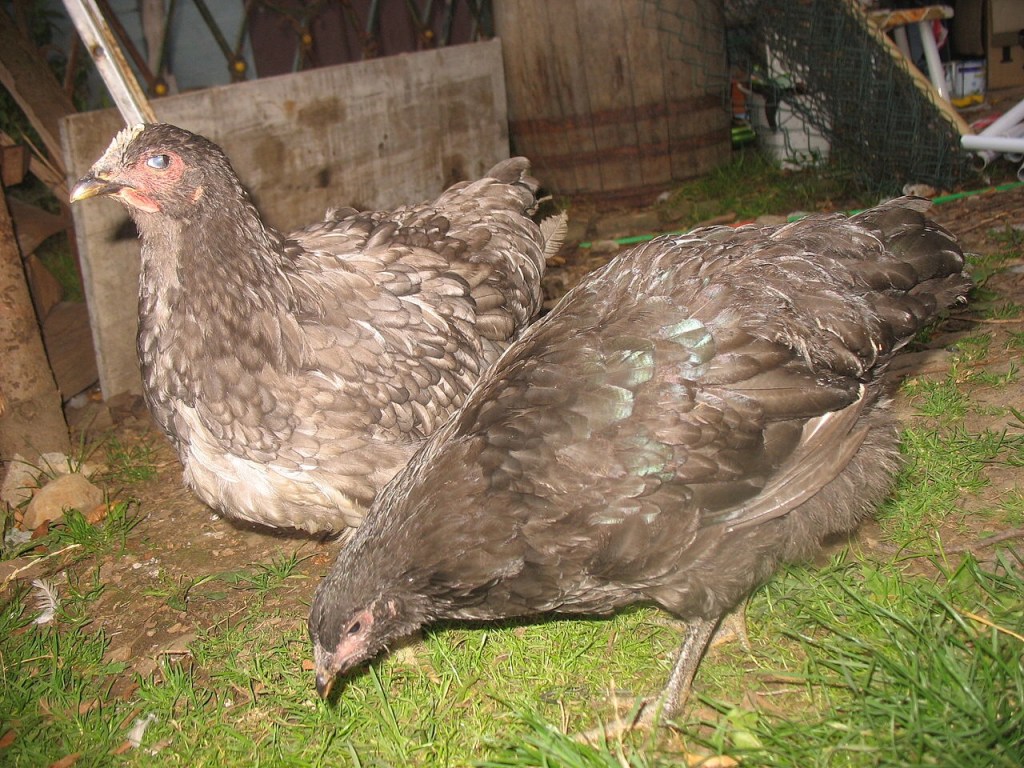
The Jersey Giant as its name suggests is the largest and heaviest of all chicken breeds. It was created in Burlington County, New Jersey in the late 19th century. The roosters top out about 17-19 pounds while the hens top out around 13-15 pounds. The males stand between 28-30 inches tall, the hens being 16-20 inches tall. Making these birds at eye level with the Brahma and slightly heavier.
The Jersey Giant was originally bred to create a chicken that could potentially replace the turkey as a premium table bird. During breeding several large breeds were used the Black Java’s, Dark Brahmas and Black Langshans.
As far as egg laying in concerned, the hens tend to lay more eggs than those of other heavy breeds. The eggs are extra-large in size with color varying from dark brown to light cream.
I have an on-line fellow backyard chicken keeper who raises this breed. She described the temperament of the Jersey Giant as docile, mellow and friendly. Even the roosters are very docile and tame. She keeps her flock of Jersey Giants as pets rather than their intended purpose. They are very good with her kids. Her children were at one point afraid of them but now they have grown to love their backyard giants.
According to her, the hens don’t really go broody. They may act like they want to sit on the nest but lose interest soon after. She uses an incubator to procreate her flock. They free range and forage well. Due to their large size, they are not easy prey for hawks. Egg laying is good, hens lay about 150-200 eggs per year, that’s about 2-4 eggs per week. The eggs are very large, a bit larger than X-large eggs sold in the stores. They vary between cream, light and medium brown in color.
The Jersey Giant is an impressive bird worthy of the time and effort required to raise them. Due to their large size, they require lots of space as to avoid problems caused by overcrowding. This is one breed that I have wanted to keep but due to my space limitation my property is not well suited. But for those who have the space and requirements necessary to keep them, they would be well worth the time.
Dominique:
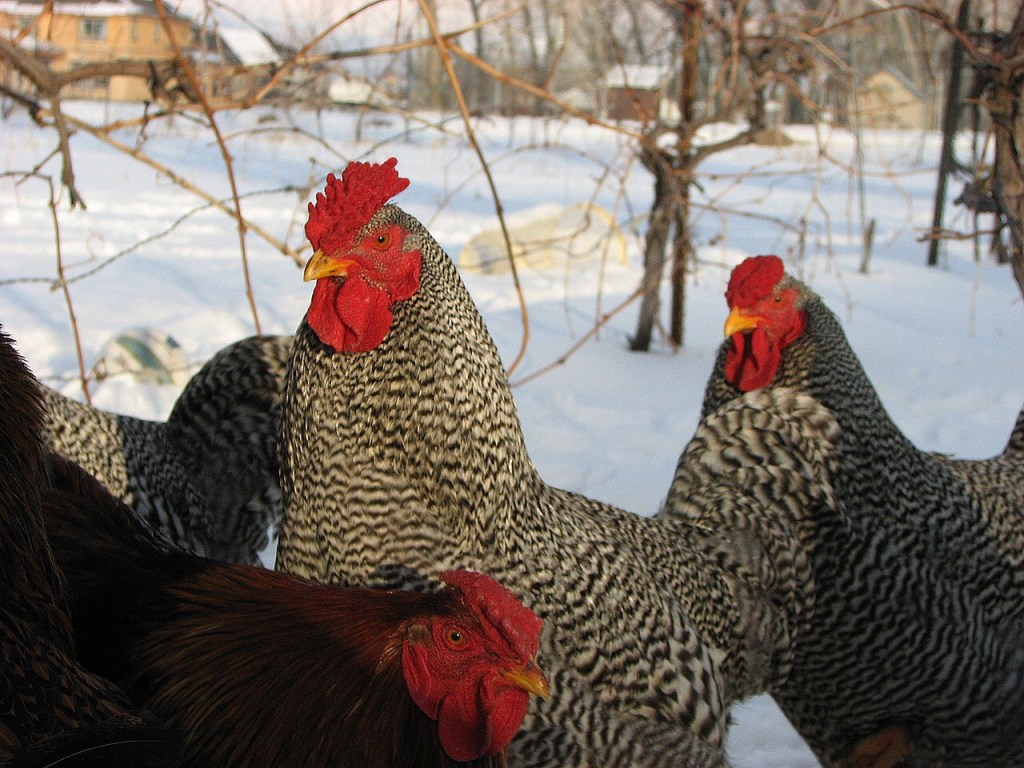
The Dominique, also known as the dominicker or Pilgrim Fowl, is a breed that was developed in the United States during the colonial period. It is considered America’s first chicken breed. It is most likely descended from chickens brought to New England from southern England during colonial times.
The Dominique could be found on farms far and wide until about the 1920’s when the breed waned due to the passing of long time Dominique enthusiasts and breeders. Due to its hardiness and ease of up-keep, the breed survived the Great Depression. By the end of World War II, the breed once again experienced decline. By the 1970’s only 4 known flocks remained. The remaining owners were contacted and participated in a breed rescue program to save the Dominique. From 1983 till about 2006, Dominiques numbers steadily rose again. As of 2007, numbers are once again starting to fall, placing the breed on The Livestock conservancy’s “watch” list. If there is one breed that we as backyard chicken keepers should take interest in, it’s this one. It is only through the efforts of backyard chicken keepers that this breed will escape extinction.
As expected from the breed’s history, I have no backyard enthusiast friends that currently keep this breed. However, according to my research, this breed is first and foremost an egg producer. Hens average between 230-275 small to medium-size brown eggs a year. That averages to about 3-4 eggs per week.
The disposition of the Dominique is said to be sweet, gentile, calm and docile. They are friendly often following their owners around the yard hoping for treats. The hens are said to occasionally be broody and are good mothers, attentive to their chicks.
The Dominique is robust and hardy with little in the way of health issues. They are low maintenance and quite self-sufficient, thus they make a great breed for first time chicken owners.
Although breeding programs have been successful, the numbers of Dominique chickens worldwide remain very low. With the surge of the backyard chicken movement numbers are holding steady. It is only through backyard chicken enthusiasts that this breed still exists. If there is one breed that needs our help as chicken keepers, its this one. I plan to add a few Dominiques to my flock as soon as I can.
The New Hampshire:

The New Hampshire is an American Breed that originated in the state of New Hampshire. Using Rhode Island Reds, poultry farmers performed selective breeding generation after generation to create a bird that grew rapidly, feathered faster, matured earlier and had greater vigor. The resulting product was The New Hampshire Red a close cousin to the Rhode Island Red. The Breed was admitted into the American Standard of Perfection in 1935.
The New Hampshire is a relatively new breed, roughly the same size as the Rhode Island Red. The hens are good layers producing about 200 large light brown eggs a year. This equates to about 3 eggs a week. It is a family friendly bird, making great pets, due to ease of care they are a good breed for first time chicken keepers.
If you are looking for a bird that is good for both meat and egg laying, this is the breed for you. Due to aggressive breeding, they are generally disease resistant, cold hearty and robust.
Mayans: Black Copper

The breed that seems to be all the range today are the Mayans. Relatively new to the backyard chicken scene, the Marans have been around since the 1900’s. A French breed, originated in the port town of Marans, in Nouvelle-Aquitaine a region of south-western France. The Marans are descended from feral fighting game chickens imported from Indonesia and India. A favorite at poultry shows, they are known for laying extremely dark eggs.
There are 9 recognized colors in the French Standard: cuckoo, golden cuckoo, black, birchen, black copper, wheaten, black-tailed, buff, white and Colombian. Of these, the black copper is the favorite among backyard chicken enthusiasts.
These birds are absolutely beautiful, pictures do not do them justice. They have a remarkable plumage. The overall body feathers are deep black which glean with a green iridescence in the sunlight. The hackle feather is a reddish/coppery tone, contrasting nicely with the black body feathers.
The Marans are a new breed in the United States, accepted by the American Poultry Association is 2011- a recent arrival.
I have a few fellow chicken keeper friends who raise this breed. They are said to have a quiet disposition, gentile and friendly. The roosters have a tendency to be a bit confrontational with other roosters. The hens are docile but are not lap chickens like some other breeds. They are a very active breed and enjoy free ranging.
Marans are renowned for their very dark brown/chocolate eggs. The hens are good layers, giving you around 3 eggs/week, which works out to about 150-200 eggs/year.
Marans are considered to be rare in the United States. They are much more common in their homeland of France. They are one of the more expensive breeds to purchase from hatcheries, single chicks ranging between $10-20. Once established, they make quite a statement in your flock.
Hamburg:

The Hamburg chicken is one of the several breeds that most resemble the chicken of the wild. Hamburg chickens were found in Holland in the 14th century but it’s unclear when they first arrived. Around 1785 Hamburgs made their way to England. Later in 1856 Hamburgs were embraced in America and were desired for their egg production potential.
As a breed, Hamburgs possess great activity and alertness. Hens are known to prefer nesting in hedges and have a habit of roosting at night in trees. During their time in England, it was believed that the Hamburgs were a hybrid across between wild chickens and pheasants. Hamburgs are prolific egg layers of small white eggs. The breed’s true gift is their ability to lay a large number of eggs over several years. They mature early, reaching laying age at about 4-5 months, 2-3 months earlier than most laying breeds.
Like the Polish, Hamburgs tend to be flap-happy and flightily. They have tendencies to fly away. It is not uncommon for keepers to find them perching and roosting high in trees. For this reason, it is best for keepers to keep them contained to a roomy Pen. To keep this breed happy, pens need to have a lot of vertical space with plenty of roosting options, high roosts are preferable. They are one of the noisier breeds, definitely not a good choice for Urban backyard chicken keepers.
Hamburgs are considered rare in the United States. They can be acquired from breeders or hatcheries that specializes in rare and very rare breeds. If kept, they will be a spice of life in your coop.
I think I’m going to cut it off here. This post has already become lengthy, possibly the longest post I have ever composed. However, I feel it is important to acquaint you with some of the Heritage Breeds that shaped our past and now our further. There are many more Heritage breeds to talk about, the ones I mentioned are some of the more popular ones kept by backyard chicken enthusiasts.
As backyard chicken keepers, we are the conservationists keeping many of these breeds from extinction. Since the meat and egg industry have no need for these birds, it is though our passions that they still exist. Breeds such as the Dominique really need our help to keep them round for generations to come. Without our efforts and interest our Heritage Breeds would be lost forever, victim to the passage of time. Many of us keep chickens as a connection to the past, simpler days of a bygone era. Our feathered friends carry with them history as many of our grandparents and ancestors kept the same breeds that now roam our backyards.
I hope that you enjoyed this post, and maybe even enlightened you to the importance of our Heritage Breeds. If you have any questions please leave a comment, you can also drop me a line at kuntryklucker@gmail.com
I am a published author, multi-disciplinary writer and blog contributor. If you like this blog, please visit some of my other sites.
Knowledge of the Spheres – Exploring the Celestial Spheres!
Coffee and Coelophysis – A blog about Dinosaurs!
Chicken Math University – Adventures in Homeschooling
If you liked this post, peck the subscribe button. As always, thank for reading. Till next time, keep on crowing!
~ The Kuntry Klucker Crew ~




Resources: The Livestock Conservancy https://www.livestockconservancy.org/
Photos: Wiki, Creative Commons, myself, and fellow poultry enthusiasts.